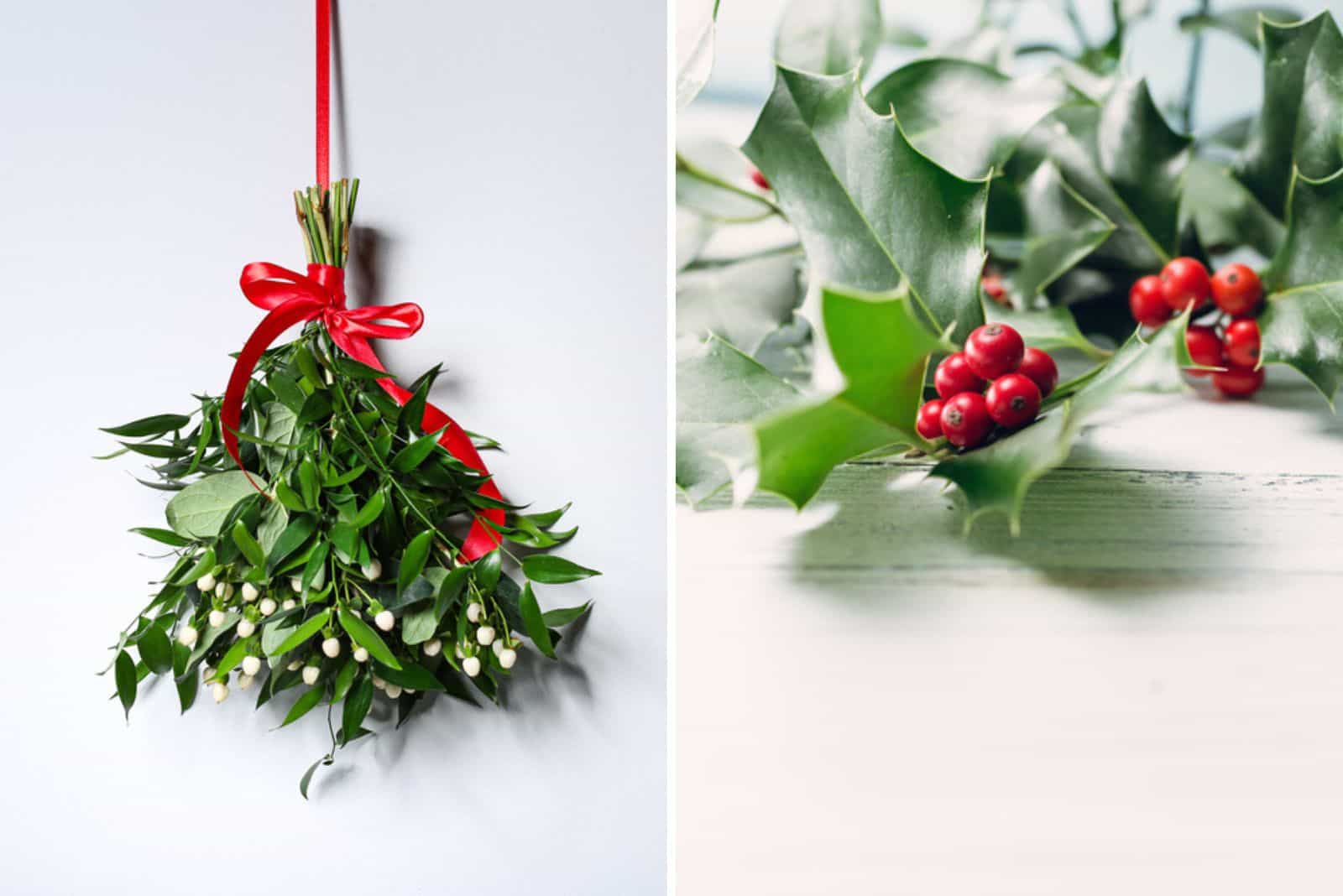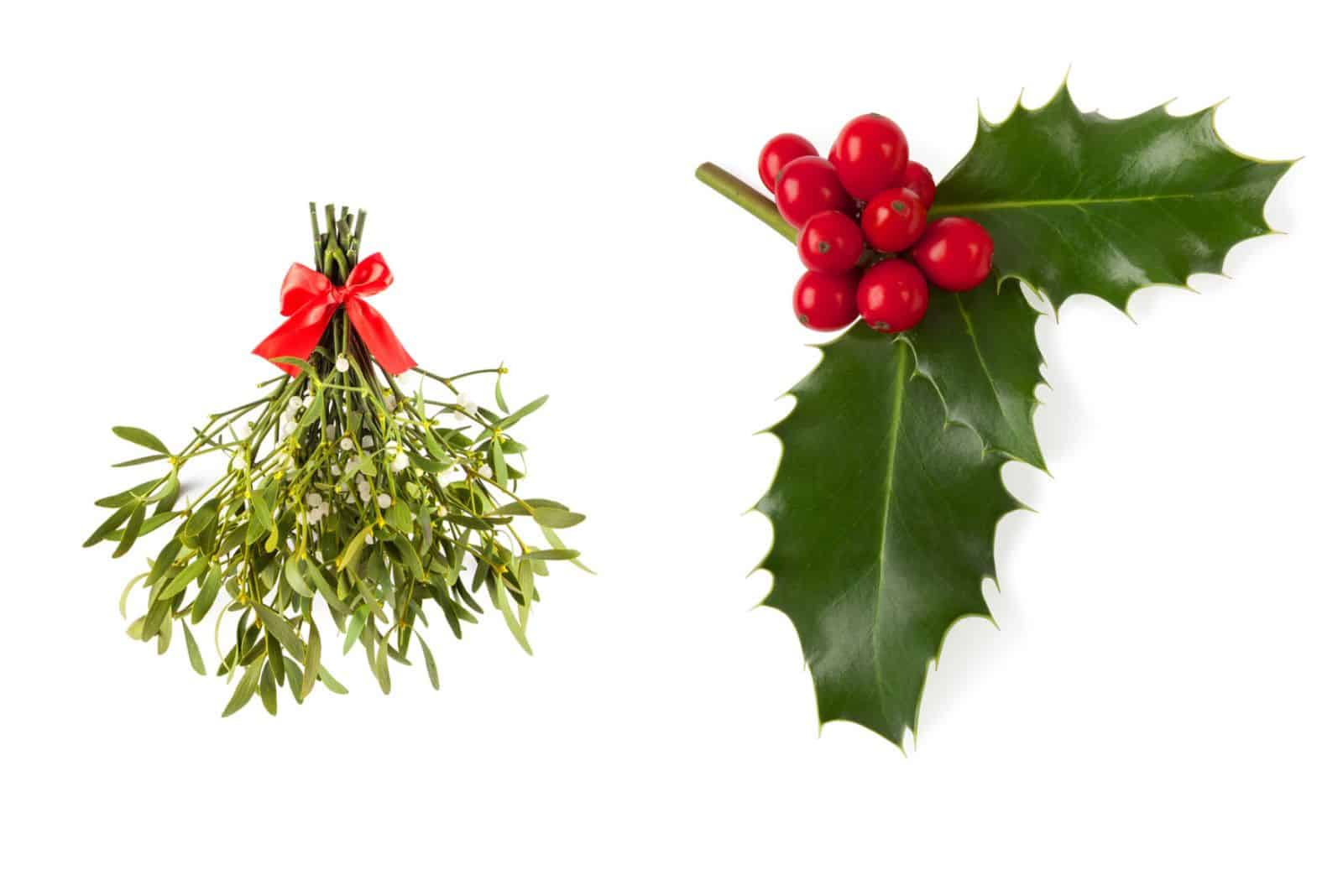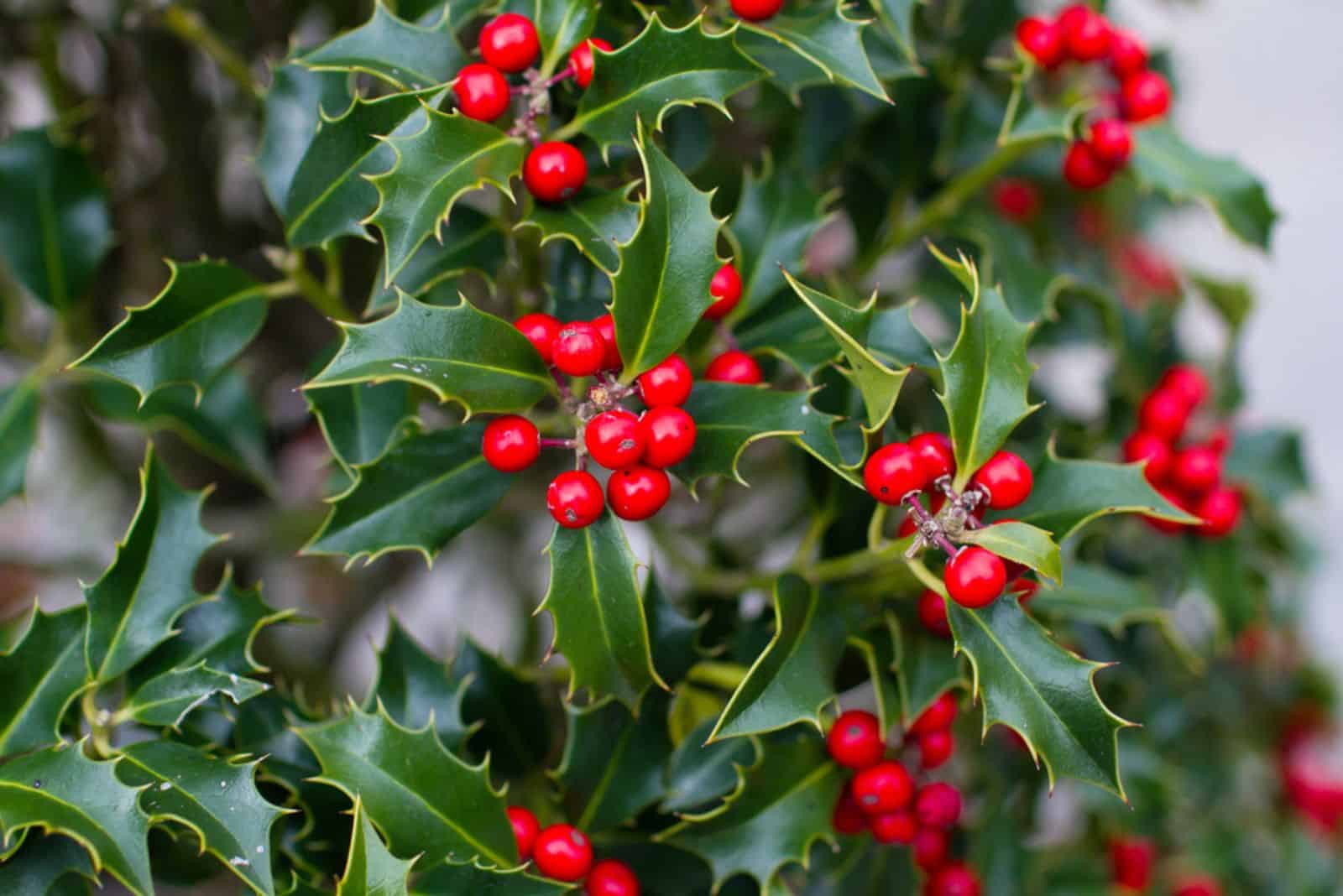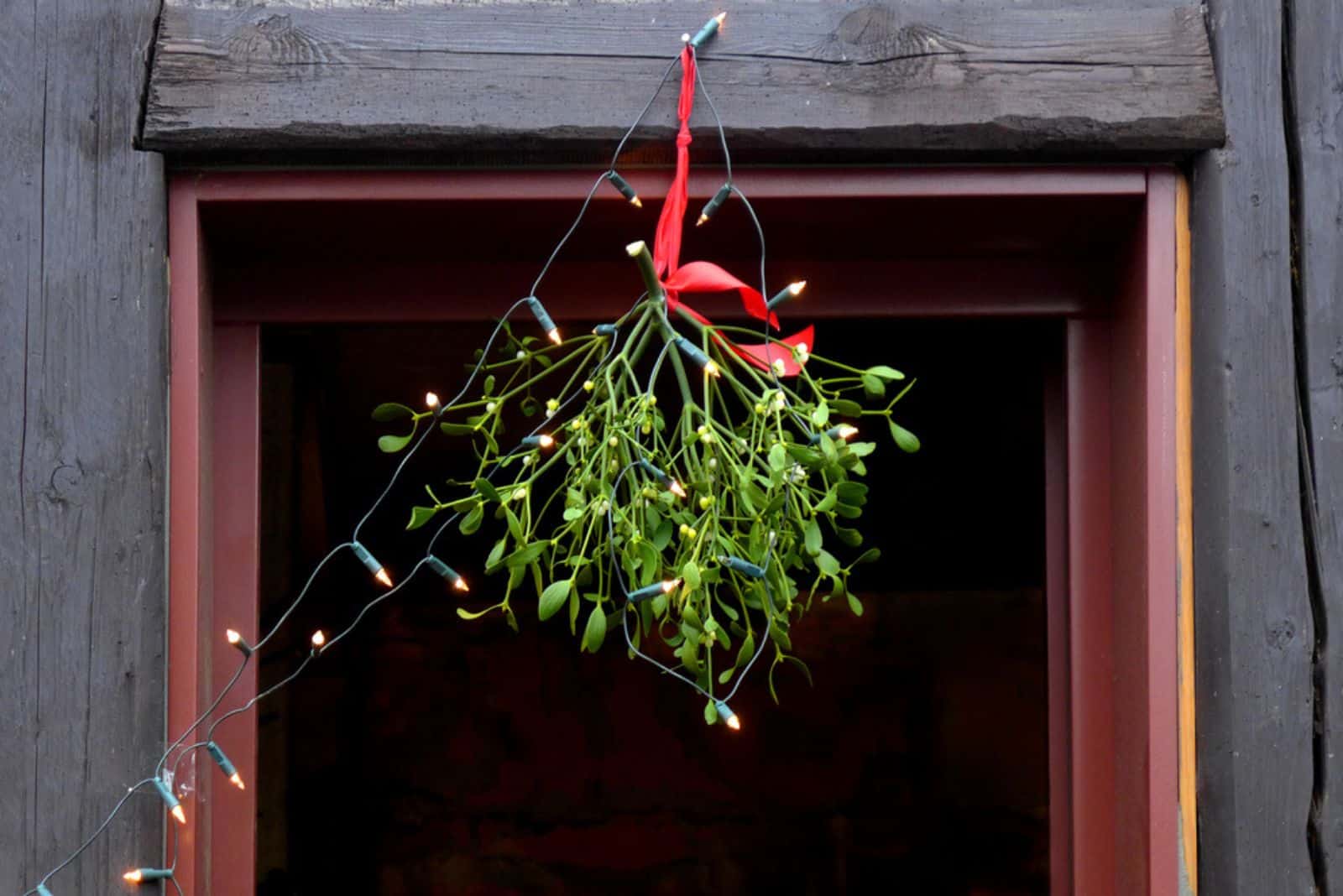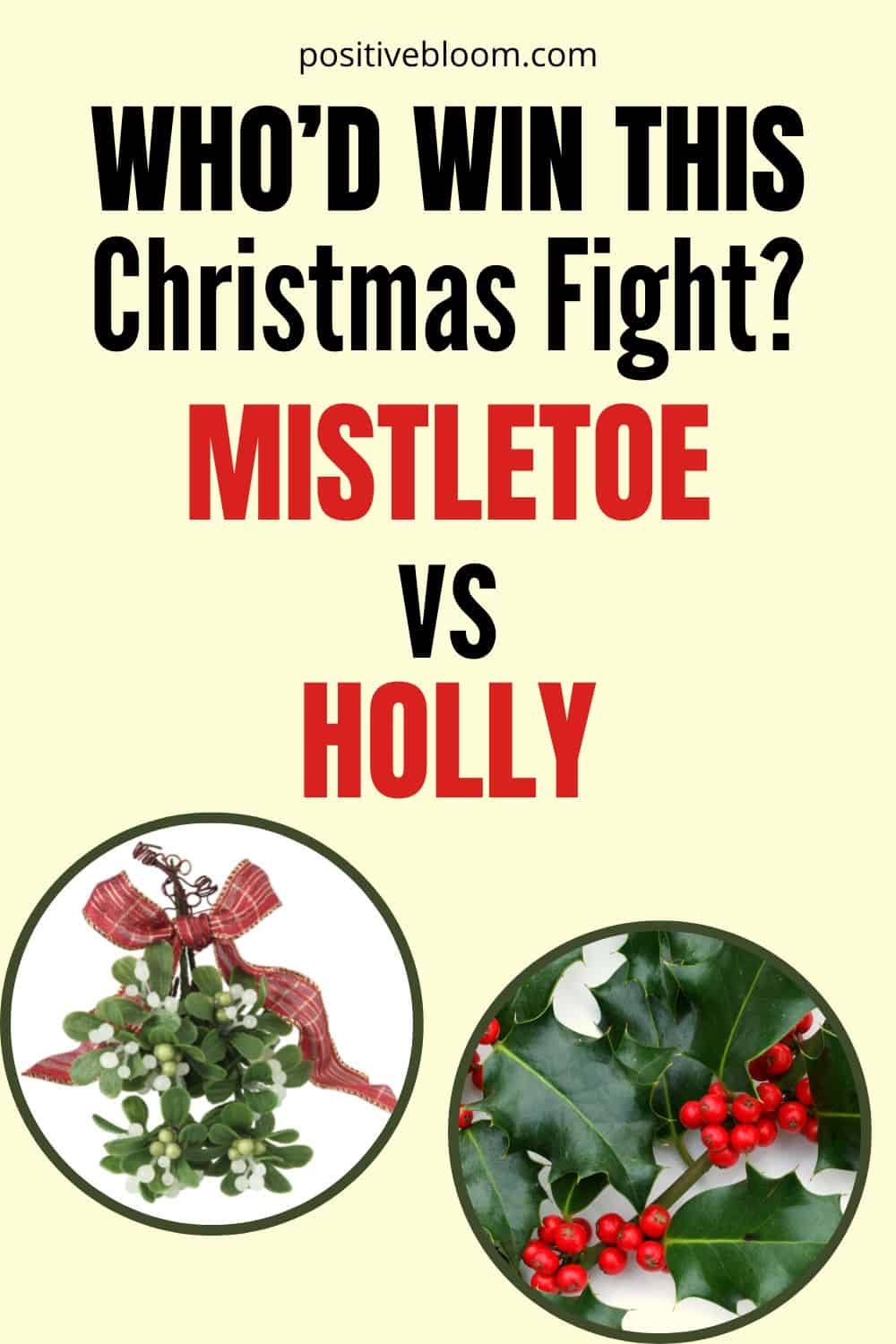Christmas is approaching, and it’s high time we started thinking about this year’s decorations. Of course, Santa, reindeer, lights, and snowmen are all essential, but have you ever thought about incorporating plants into this year’s Christmas decor?
Yes, we’re talking about mistletoe, holly, poinsettia, and even orchids!
But let’s back it up a little bit and look more carefully into the first two options. They sound so familiar, don’t they?
Well, it’s because they have a wonderful tradition and we’ll learn more about it in today’s article, but let’s get one thing straight: these plants aren’t the same!
We’ll discuss the differences and similarities between mistletoe vs holly so that you can decide which one will decorate your Christmas home. (Or you can use both!)
Before we start, here’s a short summary of their differences and similarities:
[table id=484 /]
Mistletoe vs Holly: 5 Key Differences
Both holly and mistletoe are known as Christmas plants, but there are some apparent differences between the two.
First, they are not the same plant – they don’t even belong to the same family! Then, they have different growth habits, look different, have different traditions, and even applications.
We’ll discuss these things below, which will make it easier for you to decide once and for all which one to incorporate into your Christmas decor!
Taxonomy
The first clear difference is in the plants’ names. Holly is known as Ilex, and it belongs to the family Aquifoliaceae. In contrast, mistletoe is referred to as the Viscum album and is a member of the Santalaceae family (order Santalales).
V. album is what we call European mistletoe, but there is another popular variety in the US, Phoradendron leucarpum, known by its common name, Eastern or American holly.
The most popular holly varieties are American and English holly, where the American holly is known as Ilex opaca and the English variety as Ilex aquifolium.
Growth Habit
There is another thing that makes it clear how mistletoe and holly are different plants: their growth habit.
Holly plants are usually shrubs or trees that can be evergreen or deciduous, whereas species of mistletoe are hemiparasitic. This means that mistletoe needs a host plant to survive.
This semi-parasitic plant attaches itself to its host through haustoria and uses these plants to obtain water and minerals. This slows down the growth of the host and can even kill it as mistletoe plants deprive it of everything it needs for survival.
Holly plants, on the other hand, take nutrients and moisture from the soil. They are on the list of plants that don’t like mushroom compost, so find some other source of minerals for them.
Appearance
The good news is that we can easily distinguish between these two plants based on their foliage. The holly plant is usually a small tree or a shrub with dark green leaves, whereas mistletoe typically contains lighter, olive-green vegetation.
Another thing that can help you tell them apart is the shape of their leaves. Mistletoe foliage has smooth edges. The leaves resemble tiny spoons and are flat or slightly curled. Holly, on the other hand, has glossy and fleshy spiny leaves!
Also, the tree branches of holly plants are brown, while those of mistletoe are usually green. You can easily see mistletoe branches through the foliage, whereas the holly leaves are denser, and you cannot easily see the stems.
Finally, we can easily recognize these plants based on the color of their berries. The female flowers of holly plants bear red berries, whereas the mistletoe produces white ones.
Traditional Significance
Both holly and mistletoe are plants used in Christmas decorations, but why is that? Why do people kiss under mistletoe? Why is mistletoe a Christmas tradition? Why is holly so special for this holiday?
Well, these types of plants have rich traditions, and we’ll talk about them in the sections below.
Traditional Significance Of Mistletoe
Mistletoe is a traditional kissing plant, but where does this tradition come from? It comes from the Norse legend about the goddess of love, Frigga, and her son Balder, god of light and innocence.
She loved him dearly and commanded that everyone and everything swear not to hurt him. However, she forgot about our plant, mistletoe, and Loki used it to make an arrow, which he gave to Balder’s blind brother Hoth.
Loki tricked Hoth into killing his own brother, and Frigga mourned her son. Her tears fell on the plant and became white berries. Frigga proclaimed that this creature would never harm anyone else and made it a symbol of love. That is why everyone, even arch-enemies, exchanges a kiss under the mistletoe!
Another legend connects this plant with Celtic Druids, who related it with vivacity because it has berries even in winter, and used it to cure infertility.
But why is mistletoe a Christmas tradition?
Well, the plant got popularized in the 18th century and was hung everywhere during the holiday season.
Traditional Significance of Holly
The significance of holly has its roots in Celtic and Roman traditions, as these are the cultures that first used it. They brought it into their homes because of its evergreen properties, believing it magical.
Holly was even a sacred plant in Ancient Rome and was used in Saturnalia – a festival and a holiday that honored the god Saturn.
However, in Christianity, it became a symbol of Christ’s crown of thorns; the red berries symbolize his blood, and the evergreen foliage the afterlife.
And that opinion stuck until today, as you can still see your friends and families decorating their homes with wreaths of holly.
Application
Believe it or not, there are many proven health benefits of mistletoe, such as promoting cardiovascular health, stimulating the immune system, helping with stress, anxiety, diabetes, inflammations, etc.
It’s even been said that mistletoe can boost the immune system to help fight cancer, as the extract of this plant can reduce the spread of cancerous cells and even kill them.
Of course, it can also have side effects, which is why you should be careful about the dosage and preparation of this herbal medicine.
On the other hand, holly isn’t that beneficial; or rather, its medicinal value hasn’t been proven yet. There’s been talk about how it can help with cough, digestion, heart diseases, fever, etc., but there hasn’t been enough research to support this fact.
However, people have found other applications for this plant and used it to make decorative carvings, in woodcraft, for planting privacy screens, etc.
Mistletoe And Holly: Similarities
Even though there are quite a few differences between mistletoe vs holly, there are also some things that connect these Christmas plants.
For instance, they’re both festive decorations, they come from the same region, both have evergreen species, and more.
We’ll discuss their similarities in the sections below, so stick around!
Origin
Both mistletoe and holly originate from Europe and North America, because of which both plants have similar requirements (plenty of light, moist soil or host, etc.).
Both Are Dioecious Plants
Another similarity between holly and mistletoe is that they are dioecious, meaning they both have male and female plants.
Most members of the floral kingdom have male and female reproductive systems on a single plant, but that’s not the case with these plant species.
Both Have Evergreen Species
Finally, both plants have evergreen species, and holly is even on the list of shade-tolerant evergreen trees.
However, we know plenty of deciduous trees of the Ilex genus, while mistletoes are evergreen and usually grow on deciduous trees.
(Imagine the situation where this hemiparasitic plant grows on your holly! Priceless!)
FAQ
We discussed the critical things about mistletoe and holly, their differences and similarities, but there is something we left for the end – their toxicity.
You frequently asked us about the dangers these plants pose, so we decided to answer your questions directly!
Is holly poisonous?
Holly berries are toxic to humans and animals, and you shouldn’t consume them. Even though they look harmless, they can cause nausea, vomiting, diarrhea, fatigue, dehydration, etc.
The good news is that its leaves aren’t poisonous, so you can still use them to craft Christmas wreaths!
How poisonous is mistletoe?
You’d be surprised to hear that American mistletoe isn’t poisonous, even in cases when a large number of berries has been ingested.
However, the European variety can cause nausea, vomiting, dizziness, diarrhea, severe allergic reactions, inflammations, chills, pain where it’s injected, and serious poisoning.
But these symptoms are usually connected to overdose and drinking too much concentrated mistletoe tea.
Final Thoughts
We’ve established that mistletoe and holly are two different plants and examined some of their differences, starting from their name and finishing with their applications.
However, these plants also have some similarities, such as their place of origin, both are Christmas plants, have evergreen species, etc.
So, now comes the real question: Who wins the battle: mistletoe vs holly?
That’s up to you to decide, let me know your thoughts in the comments section below!
Until next time!
Like this post? Share or pin it for later!

